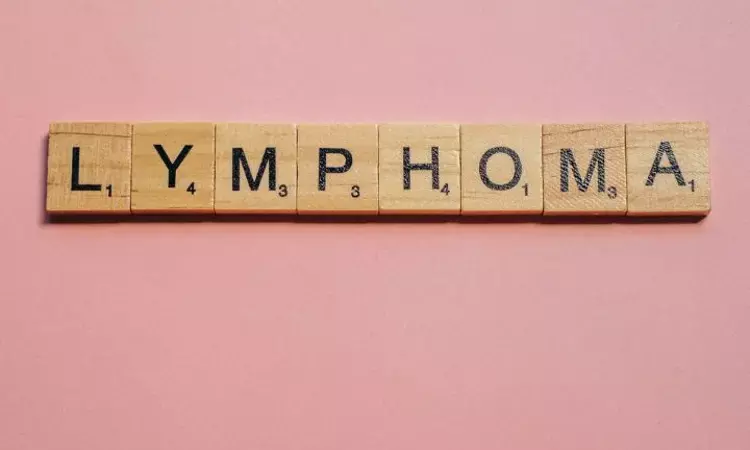- Home
- Medical news & Guidelines
- Anesthesiology
- Cardiology and CTVS
- Critical Care
- Dentistry
- Dermatology
- Diabetes and Endocrinology
- ENT
- Gastroenterology
- Medicine
- Nephrology
- Neurology
- Obstretics-Gynaecology
- Oncology
- Ophthalmology
- Orthopaedics
- Pediatrics-Neonatology
- Psychiatry
- Pulmonology
- Radiology
- Surgery
- Urology
- Laboratory Medicine
- Diet
- Nursing
- Paramedical
- Physiotherapy
- Health news
- Fact Check
- Bone Health Fact Check
- Brain Health Fact Check
- Cancer Related Fact Check
- Child Care Fact Check
- Dental and oral health fact check
- Diabetes and metabolic health fact check
- Diet and Nutrition Fact Check
- Eye and ENT Care Fact Check
- Fitness fact check
- Gut health fact check
- Heart health fact check
- Kidney health fact check
- Medical education fact check
- Men's health fact check
- Respiratory fact check
- Skin and hair care fact check
- Vaccine and Immunization fact check
- Women's health fact check
- AYUSH
- State News
- Andaman and Nicobar Islands
- Andhra Pradesh
- Arunachal Pradesh
- Assam
- Bihar
- Chandigarh
- Chattisgarh
- Dadra and Nagar Haveli
- Daman and Diu
- Delhi
- Goa
- Gujarat
- Haryana
- Himachal Pradesh
- Jammu & Kashmir
- Jharkhand
- Karnataka
- Kerala
- Ladakh
- Lakshadweep
- Madhya Pradesh
- Maharashtra
- Manipur
- Meghalaya
- Mizoram
- Nagaland
- Odisha
- Puducherry
- Punjab
- Rajasthan
- Sikkim
- Tamil Nadu
- Telangana
- Tripura
- Uttar Pradesh
- Uttrakhand
- West Bengal
- Medical Education
- Industry
Insecticide-Treated mosquito Bed Nets Linked to Reduction in Burkitt Lymphoma Incidence: JAMA

Researchers have found that the large-scale rollout of insecticide-treated bed nets (ITNs) in sub-Saharan Africa during the 2000s is associated with a significant reduction in the incidence of Burkitt lymphoma (BL) among children. According to a systematic review and meta-analysis published in JAMA Network Open by Nora S. this important finding highlights an additional benefit of malaria control programs in the region.
Burkitt lymphoma (BL) is one of the most common childhood cancers in sub-Saharan Africa and has been etiologically linked to malaria. However, limited evidence has been available to demonstrate the impact of malaria interventions on BL incidence. The systematic review and meta-analysis aimed to investigate the potential association between the large-scale rollout of ITNs in sub-Saharan Africa and the incidence of BL in children aged 0 to 15 years.
The study involved a systematic review of epidemiological studies on BL incidence rates in children and adolescents in sub-Saharan African countries where malaria is endemic. Researchers searched the Embase, Global Health, and Medline databases, as well as cancer registry publications, to identify studies published between January 1, 1990, and February 27, 2023. The review was conducted according to the Preferred Reporting Items for Systematic Reviews and Meta-analyses (PRISMA) reporting guideline.
Data were extracted independently by two reviewers, and the quality of studies was assessed based on predefined criteria: data collection, case ascertainment, and calculation of person-time at risk. The main outcomes and measures included the incidence rates of BL during childhood and mean ITN use in the population. Data were analyzed using a random-effects negative binomial regression model.
The key findings of the study were:
• Of the 2,333 studies meeting selection criteria, 23 studies comprising 66 data points on BL incidence were included in the analysis.
• The studies were based on 5,226 BL cases from locations with large-scale ITN use across 17 countries.
• The incidence rates of BL were found to be 44% (95% CI, 12%-64%) lower in the period after ITN introduction compared to before.
• The adjusted pooled incidence rates of BL were 1.36 (95% CI, 0.88-2.10) and 0.76 (95% CI, 0.50-1.16) per 100,000 person-years before and after ITN introduction, respectively.
• After adjusting for potential confounders, a 1-percentage point increase in mean ITN use in the population in the 10 years prior to BL data collection was associated with a 2% (95% CI, 1%-4%) reduction in BL incidence.
The systematic review and meta-analysis provide evidence that the large-scale rollout of ITNs in the 2000s is associated with a reduction in BL burden among children in sub-Saharan Africa. This study underscores the importance of malaria control programs and their potential to impact broader health outcomes in the region.
Reference:
Schmit, N., Kaur, J., & Aglago, E. K. (2024). Mosquito bed net use and burkitt lymphoma incidence in sub-Saharan Africa: A systematic review and meta-analysis. JAMA Network Open, 7(4), e247351. https://doi.org/10.1001/jamanetworkopen.2024.7351
Dr Riya Dave has completed dentistry from Gujarat University in 2022. She is a dentist and accomplished medical and scientific writer known for her commitment to bridging the gap between clinical expertise and accessible healthcare information. She has been actively involved in writing blogs related to health and wellness.
Dr Kamal Kant Kohli-MBBS, DTCD- a chest specialist with more than 30 years of practice and a flair for writing clinical articles, Dr Kamal Kant Kohli joined Medical Dialogues as a Chief Editor of Medical News. Besides writing articles, as an editor, he proofreads and verifies all the medical content published on Medical Dialogues including those coming from journals, studies,medical conferences,guidelines etc. Email: drkohli@medicaldialogues.in. Contact no. 011-43720751


